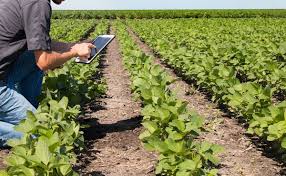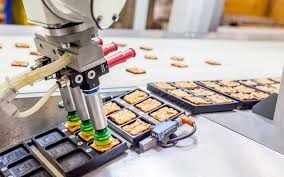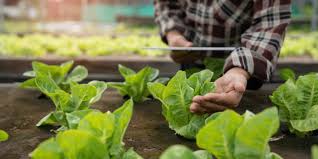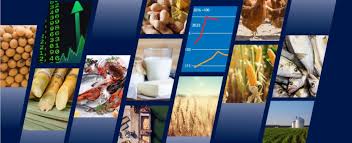Global food demand is a pressing issue that shapes the future of agriculture, economies, and societies around the world. With the global population projected to reach nearly 10 billion by 2050, the need for food is escalating rapidly.
This growth, coupled with urbanization, changing dietary preferences, and climate change, places immense pressure on agricultural systems to produce sufficient and sustainable food supplies.
The increasing population drives higher demand for diverse food products, especially protein-rich foods like meat, dairy, and fish. As more people enter the middle class, particularly in developing countries, there is a shift toward diets that include more animal-based and processed foods. This transition poses challenges for food production, as it requires more resources, including land, water, and energy.
Moreover, climate change significantly impacts agricultural productivity. Extreme weather events, shifting rainfall patterns, and rising temperatures threaten crop yields and food security. Farmers must adapt to these changes while managing pests and diseases, which are becoming more prevalent due to changing climates.
Food waste is a critical concern in addressing global food demand. Approximately one-third of all food produced is wasted, which represents a significant loss of resources and contributes to environmental degradation. Reducing food waste at all levels, from production to consumption, is essential for improving food availability and sustainability.
Understanding global food demand is crucial for policymakers, farmers, and consumers alike. By recognizing the factors driving this demand, stakeholders can develop strategies to ensure food security, promote sustainable agricultural practices, and address the challenges posed by a growing population.
The future of food depends on our collective efforts to innovate and adapt to meet these needs.
Current Global Food Demand
Global food demand is rising due to several factors:
1. Population Growth: The global population is projected to reach approximately 9.7 billion by 2050, significantly increasing the demand for food.
2. Urbanization: As more people move to urban areas, dietary patterns shift, often resulting in higher consumption of processed and meat-based foods, which require more resources to produce.
3. Economic Development: Rising incomes in developing countries lead to increased demand for diverse and high-quality food products, placing additional pressure on food production systems.
4. Changing Diets: The shift towards more resource-intensive diets, especially in emerging economies, contributes to the overall demand for food.
Challenges to Food Production

1. Climate Change: Altered weather patterns, such as extreme temperatures, droughts, and flooding, disrupt crop yields and farming practices.
2. Soil Degradation: Unsustainable farming practices lead to soil erosion, nutrient depletion, and reduced agricultural productivity.
3. Water Scarcity: Increased competition for freshwater resources and pollution can limit water availability for irrigation, affecting crop production.
4. Pest and Disease Pressure: Rising pest populations and plant diseases can devastate crops, necessitating greater reliance on chemical controls that may harm ecosystems.
5. Economic Factors: Fluctuating market prices, trade policies, and access to resources can affect farmers’ ability to produce food sustainably.
The Importance of Sustainability
Sustainability in agriculture is critical for several reasons:
1. Resource Conservation: Sustainable practices help preserve essential resources like soil, water, and biodiversity for future generations.
2. Environmental Protection: Adopting sustainable methods reduces pollution and minimizes negative impacts on ecosystems, promoting overall environmental health.
3. Food Security: Sustainable agriculture aims to produce enough food to meet the needs of the growing population while ensuring that farming systems remain viable in the long term.
4. Economic Viability: Implementing sustainable practices can enhance the resilience of farming systems, ensuring stable incomes and livelihoods for farmers.
5. Social Equity: Sustainable agriculture fosters equitable access to resources and food, promoting community well-being and reducing hunger.
Sustainable Agricultural Practices
To address the challenges of food production and enhance sustainability, various agricultural practices can be employed:
1. Crop Rotation: Rotating different crops helps improve soil health, reduce pest pressures, and enhance biodiversity.
2. Conservation Tillage: Minimizing soil disturbance through reduced or no-till farming preserves soil structure, improves water retention, and reduces erosion.
3. Integrated Pest Management (IPM): IPM combines biological, cultural, and chemical practices to manage pests sustainably, reducing reliance on harmful pesticides.
4. Agroforestry: Integrating trees and shrubs into agricultural landscapes can improve biodiversity, enhance soil health, and provide additional income sources for farmers.
5. Organic Farming: Utilizing natural fertilizers and pest control methods promotes soil health and reduces environmental impacts, supporting sustainable food production.
Read Also: Best Number of Ruminant Animals per Housing Unit for Fattening
Technological Innovations in Food Production

Modern technology plays a crucial role in enhancing food production while reducing environmental impacts. Various innovations are contributing to more efficient, sustainable, and resilient food systems.
1. Precision Agriculture: This approach uses GPS, sensors, and data analytics to optimize crop management. It allows farmers to apply water, fertilizers, and pesticides precisely where needed, minimizing waste and improving yields.
2. Vertical Farming: By growing crops in stacked layers within controlled environments, vertical farming maximizes space and enables year-round production, especially in urban areas with limited land.
3. Biotechnology: Advances in genetic engineering and plant breeding are helping develop crop varieties that are more resistant to pests, diseases, and extreme weather conditions.
4. Automation and Robotics: Automated machinery and robotics improve efficiency in planting, harvesting, and processing, reducing the need for manual labor and enabling large-scale production.
5. Artificial Intelligence and Machine Learning: AI-powered systems analyze large datasets to make informed decisions on crop management, predicting issues like pest infestations or yield estimates with greater accuracy.
Policy and Economic Considerations
Policies and economic strategies are essential for encouraging sustainable food production and making it accessible to all. Effective frameworks can drive innovation, reduce environmental impacts, and promote food security.
1. Subsidies and Incentives for Sustainable Practices: Governments can provide financial incentives for adopting sustainable practices, such as organic farming or renewable energy use, to reduce environmental impacts.
2. Trade Policies and Food Security: Fair trade policies that prioritize local production and reduce dependency on imports can help countries achieve food self-sufficiency and stability.
3. Regulation of Agricultural Inputs: Policies that regulate pesticide and fertilizer use are vital for protecting soil health, water quality, and biodiversity.
4. Funding for Research and Development: Investment in agricultural research can lead to breakthroughs in sustainable food production technologies, such as drought-resistant crops or eco-friendly pest control.
5. Supporting Small-Scale Farmers: Economic policies that provide access to credit, training, and market opportunities for smallholder farmers can enhance rural livelihoods and promote equitable food systems.
The Role of Education and Awareness
Raising awareness and educating both producers and consumers about sustainable food practices is essential for driving meaningful change in food production systems.
1. Farmer Training Programs: Providing farmers with education on sustainable techniques, such as crop rotation, soil conservation, and efficient irrigation, can improve productivity and reduce environmental impact.
2. Public Awareness Campaigns: Informing consumers about the environmental benefits of sustainable food choices encourages demand for responsibly-produced products.
3. Incorporating Food Education in Schools: Teaching students about food systems, nutrition, and sustainability can cultivate a generation that values and advocates for sustainable practices.
4. Collaboration with Nonprofits and NGOs: Partnerships with organizations focused on agricultural education and sustainability can extend training opportunities to underserved communities.
5. Promoting Sustainable Diets: Awareness campaigns can promote plant-based diets, reduce food waste, and encourage local food consumption, leading to a smaller ecological footprint.
Read Also: Common Rabbit Diseases and How to Cure them
Future Directions for Sustainable Food Production

The future of food production depends on innovations and strategies that balance productivity with environmental stewardship to ensure food security for future generations.
1. Adoption of Regenerative Agriculture: Regenerative practices, such as cover cropping, agroforestry, and minimal tillage, enhance soil health and biodiversity, making food production more resilient to climate change.
2. Expansion of Urban Agriculture: As cities grow, urban agriculture practices like rooftop farms and community gardens can provide fresh, local produce, reducing transportation emissions and promoting food security.
3. Investments in Plant-Based and Lab-Grown Foods: Developing alternatives to traditional animal products can reduce the environmental impact of food production, especially regarding greenhouse gas emissions and water use.
4. Integration of Renewable Energy Sources: Using solar, wind, and other renewable energy sources in agriculture can reduce dependence on fossil fuels and lower greenhouse gas emissions.
5. Strengthening Global Food Systems: Collaboration between governments, corporations, and communities can create more resilient food systems, addressing global challenges such as food security, climate change, and sustainable development.
Sustainable food production requires a comprehensive approach that includes technological advancements, supportive policies, education, and a commitment to long-term environmental health.
Do you have any questions, suggestions, or contributions? If so, please feel free to use the comment box below to share your thoughts. We also encourage you to kindly share this information with others who might benefit from it. Since we can’t reach everyone at once, we truly appreciate your help in spreading the word. Thank you so much for your support and for sharing!
Read Also: The Effect of Heat Stress on Animal Productivity
Frequently Asked Questions
We will update this section soon.

